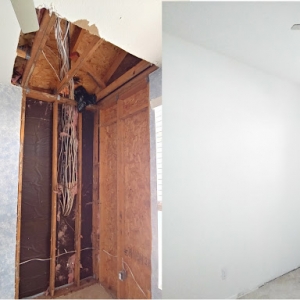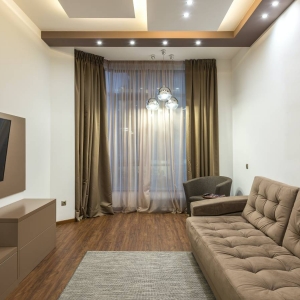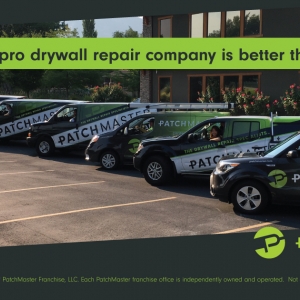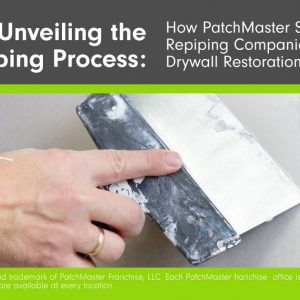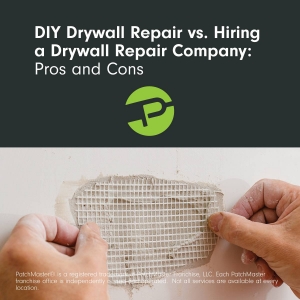We have had good success matching most texture finishes we run across in Southwest Michigan. There are many types of texture materials and application techniques that have been used over the years on plaster and drywall surfaces. Each one takes a different set of material additives, application techniques and skill level of the finisher.
For the older homes, plaster or drywall, we find the hand applied “Swirl” texture in many homes where we perform repairs. This texture is the hardest to achieve a perfect match on a repair since the texture is applied in overlapping layers. The repaired area may be slightly noticeable where you break into the middle of a pattern. We can achieve good results, and in most cases, only someone knowledgeable of the repair area can spot the break in the texture pattern. While this is not common with newer homes, it is found in many historic homes and provides a distinctive look. Depending on the number of layers of paint, material formulations and application techniques can be adjusted for a match to most finishes.
In the 70’s the “Popcorn” finish became popular with home owners. The “Popcorn” finish is sprayed on and a number of different materials were used as filler to create the course look. In older homes, asbestos was commonly used in the mix and safety precautions must be taken if it is removed. There are different material additives that were used to modify the size of the granules in the texture. The mix and application techniques can be altered for different effects. For a good match, the repair area needs to be over-sprayed for blending into an existing pattern and extensive masking is needed to prevent spray in unwanted areas. Also popular in 70’s, a number of other spray textures (i.e., “Orange Peel”), were also popular. Variations on these textures were made with the use of a tool to “knock down” the peaks of the texture which created a unique and distinctive look. The Popcorn and Orange Peel textures are relatively easy to match and the “Knockdown” or “Skip Trowel” textures require a bit more experience to get a good match.
The most common texture technique we find in new homes is a hand applied “Stomp” pattern. Material is first applied to the ceiling, either rolled, sprayed or troweled and then another tool is pressed into the wet material for a variety of patterns. Sponges, different shaped brushes and other aids (i.e., wadded paper) are commonly used. The ability to match these textures is dependent upon the finished to recognize both the material application method and secondary tool that was used. We have had great success with the stomp patterns and for the others, sometimes is takes a few tries. We use the slower setting materials for these textures, recognizing that we may need more working time for a perfect match.
In summary, most textures can be matched by an experienced finisher. If you have question regarding our ability to match a texture, send us a photo and we can let you know the degree of difficulty involved.

